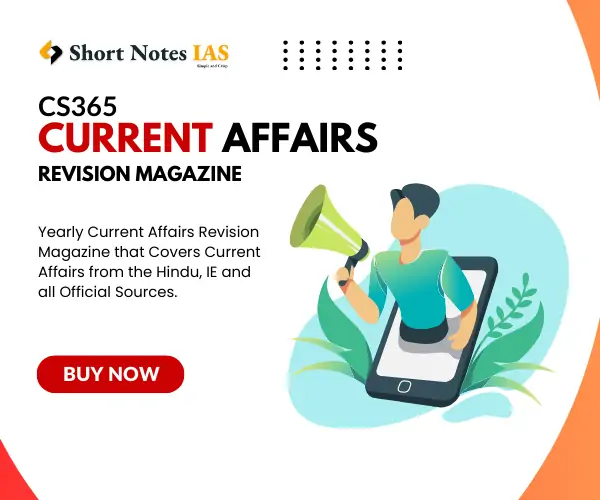India Banned Chinese apps total 59 which included the hugely popular TikTok, WeChat and UC Browser, amid a huge economic backlash against China following the June 15 clashes at Ladakh in which 20 Indian soldiers died in action. Sources said inputs from intelligence agencies suggested that the apps have been violating the terms of usage, compromising users privacy, and being used as spyware or malware. Within minutes of the announcement, the Indian government’s TikTok account MyGov, which had 1.1 million followers, was disabled.

Union Home Minister Amit Shah, who had extended his complete support to the move to ban the China-linked applications, signed off on Home Secretary Ajay Bhalla’s recommendation on Saturday. Since the government had decided against just issuing an advisory cautioning people about the risks associated with these applications, the formal orders were issued by the IT ministry.
The move comes a day after Prime Minister Narendra Modi said India has given a “befitting response” to China. He also spoke of the countrywide call for boycott of Chinese goods, juxtaposing it against the government’s “Atma Nirbhar Bharat” campaign. “We will buy local and be vocal for local and this will help India become stronger,” he said.
In a statement this evening, the government said “in view of information available they are engaged in activities which is prejudicial to sovereignty and integrity of India, defence of India, security of state and public order.” lead to ban of various apps
India Banned 59 Chinese apps due to sensitive data leakage:
The statement from the Ministry of Electronics and Information and Technology said it had received an “exhaustive recommendation” from the Indian Cyber Crime Coordination Centre and the Ministry of Home Affairs.
The ministry said it also received representations from people on “security of data and risk to privacy” regarding certain apps.
“The compilation of these data, its mining and profiling by elements hostile to national security and defence of India, which ultimately impinges upon the sovereignty and integrity of India, is a matter of very deep and immediate concern which requires emergency measures. At the same time, there have been raging concerns on aspects relating to data security and safeguarding the privacy of 130 crore Indians,” said the release.
The move comes amid a countrywide call from traders and civil society to boycott Chinese products and services after the June 15 clashes. The government had chipped in with a bar on Chinese equipment for the 4G upgradation of the state-owned Bharat Sanchar Nigam Ltd and sacking of a Chinese firm that had a Rs 471-crore railways contract.
Major restrictions on Goods and their Origin:
Last week, the government also made the mention of the “Country of Origin” mandatory for sellers listing their products in the Government e-Marketplace — a move that’s expected to add to the odds against Chinese products. E-commerce companies including Amazon and Flipkart, have decided to follow suit.
Experts suggested that the ban on apps is a major blow to China’s Digital Silk Route ambitions, eroding millions of dollars from valuation of its companies. This could also lead to more countries following India’s path in acting against these Apps.
After learning that, India banned 59 Chinese apps, Other countries also thinking to ban them.
The presser notes that the Ministry of Information Technology has received many complaints from various sources about misuse of some mobile apps for stealing and surreptitiously transmitting users’ data in an unauthorized manner to servers which have locations outside India. and thats the reason for India to Ban 59 Chinese apps
Govt also said there has been a strong chorus in the public space to take strict action against Apps that harm India’s sovereignty as well as the privacy of our citizens.

“The Modi government shows its tremendous resolve and dexterity of engaging China on multiple fronts and hitting China where it hurts the most,” said a party source. “This is India’s first salvo to China after the border clashes, showing that India has a diverse range of retaliatory options,” he added.
India Banned Chinese Apps, Here is the full list of 59 apps that have been banned:
1. TikTok
2. Shareit
3. Kwai
4. UC Browser
5. Baidu map
6. Shein
7. Clash of Kings
8. DU battery saver
9. Helo
10. Likee
11. YouCam makeup
12. Mi Community
13. CM Browers
14. Virus Cleaner
15. APUS Browser
16. ROMWE
17. Club Factory
18. Newsdog
19. Beutry Plus
20. WeChat
21. UC News
22. QQ Mail
23. Weibo
24. Xender
25. QQ Music
26. QQ Newsfeed
27. Bigo Live
28. SelfieCity
29. Mail Master
30. Parallel Space
31. Mi Video Call — Xiaomi
32. WeSync
33. ES File Explorer
34. Viva Video — QU Video Inc
35. Meitu
36. Vigo Video
37. New Video Status
38. DU Recorder
39. Vault- Hide
40. Cache Cleaner DU App studio
41. DU Cleaner
42. DU Browser
43. Hago Play With New Friends
44. Cam Scanner
45. Clean Master – Cheetah Mobile
46. Wonder Camera
47. Photo Wonder
48. QQ Player
49. We Meet
50. Sweet Selfie
51. Baidu Translate
52. Vmate
53. QQ International
54. QQ Security Center
55. QQ Launcher
56. U Video
57. V fly Status Video
58. Mobile Legends
59. DU Privacy
India increases surveillance in Indian Ocean region to track Chinese activities
- The Navy has increased its surveillance missions and beefed up operational deployment in the Indian Ocean region in the wake of India’s seven-week bitter border standoff with China in eastern Ladakh, people familiar with the development said.
- The Indian Navy is also ramping up its operational cooperation with various friendly naval forces like the US Navy and Japan Maritime Self Defense Force in view of the fast evolving regional security landscape, they said.
- On Saturday, the Indian Navy held a crucial exercise with Japanese Navy in the Indian Ocean region, an area where Chinese naval vessels and submarines are making frequent forays, they said.
How Rafale can deter China
- India had signed an inter-governmental agreement with France in September 2016 for procurement of 36 Rafale fighter jets at a cost of around Rs 58,000 crore.
- The aircraft is capable of carrying a range of potent weapons.
- European missile maker MBDA’s Meteor beyond visual range air-to-air missile and Scalp cruise missile will be the mainstay of the weapons package of the Rafale.
- Meteor is the next generation of BVR air-to-air missile (BVRAAM) designed to revolutionise air-to-air combat.
- The weapon has been developed by MBDA to combat common threats facing the UK, Germany, Italy, France, Spain and Sweden.
- Besides the missile systems, the Rafale jets will come with various India-specific modifications, including Israeli helmet-mounted displays, radar warning receivers, low-band jammers, 10-hour flight data recording, infra-red search and tracking systems among others.
How China is encircling India
- China has been strategically encircling India.
- It has invested in the China-Pakistan Economic Corridor that involves expressways from the Pakistan-China border down to the newly constructed deep-water port of Gwadar in Balochistan.
- Though the project has been mired with delays and cost overruns, the fact is that when operational, China will have a leased deep-water port in the Persian Gulf. It won’t be only for trade.
Did Xi Jinping miscalculate?
- Xi Jinping may reach out to countries such as Nepal, and possibly Bangladesh, to surround India.
- Clearly, China is struggling with the stretched costs of ‘One Belt One Road’ initiative, most of which could turn into bad debts.
- At a more strategic level though, has Xi miscalculated?
- Xi’s approach is surprisingly belligerent for a modern leader.
- In 1969, when threatened by Soviets amid internal strife, Mao responded by befriending Richard Nixon and the US. In 2020, when faced with growing international isolation, an insecure Xi chose to open up multiple fronts against India.
- His generals might benefit, but Xi, in the process, could end up with more debits to show than gains.
- One, he has ruptured a carefully built-up truce with India of 24 years.
- Two, in India, he may have weaned away a potential US ally against China and leveraged a large market in the face of a stubborn Donald Trump.
- He failed on both. What is the outcome of this adventurism?
- An angry India that joins a global clamour against China more willingly, an Indian market that is no longer welcoming, and opening up options for the Indian Army in a localised conflict along LoAC that had been kept at bay by the ‘no weapon use’ accords of 1996 and 2005.
- Three, through his bellicose stance across multiple quarters — India, Taiwan, South China, Hong Kong —Xi finds himself hastening the emergence of US-led alliances such as Quadplus and D10, that puts pressure on China’s expansive naval plans for 2030.
Source: Multiple Sources



